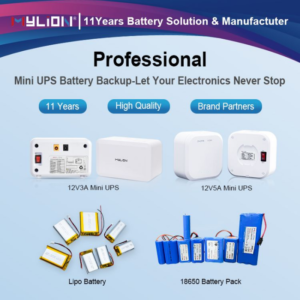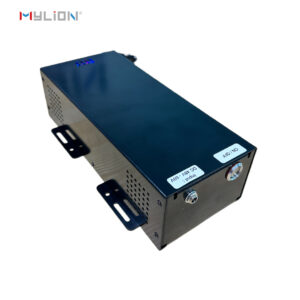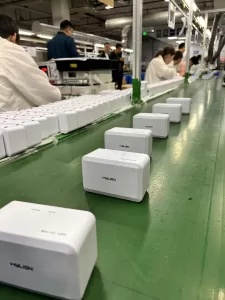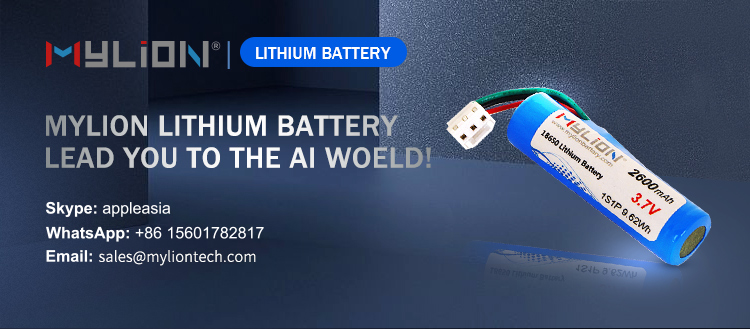
It is understood that Japan’s SONY company set a standard lithium-ion battery model in order to save costs, where 18 means a diameter of 18mm, 65 means a length of 65mm, and 0 means a cylindrical battery. It is the originator of the 18650 lithium-ion battery. Our common 18650 batteries are divided into lithium-ion batteries and lithium iron phosphate batteries. The nominal voltage of the lithium ion battery is 3.7v, the charging cut-off voltage is 4.2v, the nominal voltage of the lithium iron phosphate battery is 3.2V, the charging cut-off voltage is 3.6v, the capacity is usually 1200mAh-3350mAh, and the common capacity is 2200mAh-2600mAh .
It is generally believed that if the no-load voltage of the lithium battery is lower than 3.0V, it is considered to be exhausted (the specific value depends on the threshold of the battery protection board, such as as low as 2.8V and 3.2V). Most lithium batteries can’t discharge the no-load voltage below 3.2V, otherwise over-discharge will damage the battery (generally, lithium batteries on the market are basically used with a protection board, so over-discharge will also cause the protection board to fail to detect To the battery, thus unable to charge the battery).
4.2V is the maximum limit voltage for battery charging. It is generally considered that the battery is fully charged when the no-load voltage of the lithium battery is charged to 4.2V. During the battery charging process, the battery voltage gradually rises from 3.7V to 4.2V, and the lithium battery cannot be charged. Charge the no-load voltage above 4.2V, otherwise it will damage the battery. This is the special feature of lithium batteries. Generally speaking, 18650 lithium batteries have the following advantages.
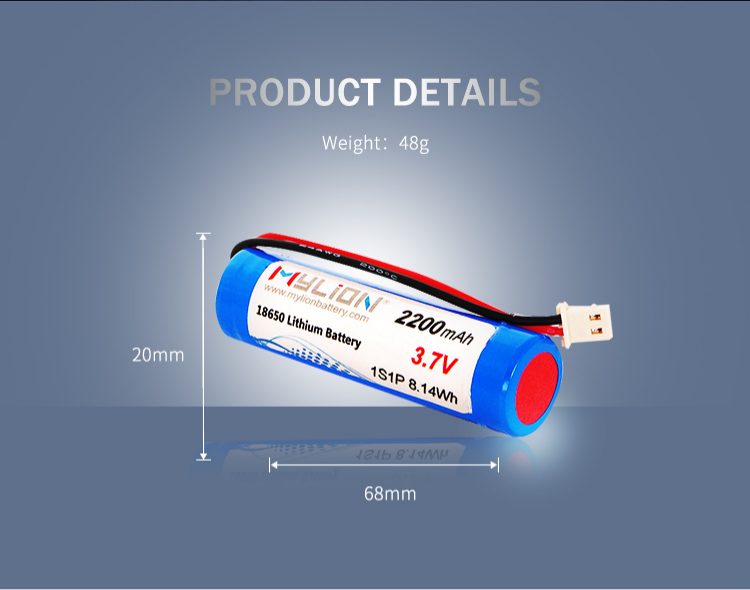
advantage:
1. Large capacity
The capacity of 18650 lithium battery is generally between 1200mah~3600mah, and the general battery capacity is only about 800mah. If combined into a 18650 lithium battery pack, the 18650 lithium battery pack can easily exceed 5000mah.
2. Long life
The 18650 lithium battery has a long service life, and the cycle life can reach more than 500 times in normal use, which is more than twice that of ordinary batteries.
3. High safety performance
18650 lithium battery has high safety performance, non-explosive, non-combustible; non-toxic, non-polluting, and has passed RoHS trademark certification; various safety performances can be achieved in one go, and the number of cycles is greater than 500; high temperature resistance performance, discharge efficiency of 100% under 65 degrees . In order to prevent the battery from short-circuiting, the positive and negative electrodes of the 18650 lithium battery are separated. Therefore, the short-circuit phenomenon may have been reduced to the extreme. A protection board can be installed to avoid overcharge and overdischarge of the battery, which can also extend the service life of the battery.
4. High voltage
The voltages of 18650 lithium batteries are generally 3.6V, 3.8V and 4.2V, which are much higher than the 1.2V voltages of nickel-cadmium and nickel-hydrogen batteries.
5. No memory effect, easy to use
There is no memory effect. It is not necessary to empty the remaining power before charging.
6. Small internal resistance:
The internal resistance of polymer batteries is smaller than that of ordinary liquid batteries. The internal resistance of domestic polymer batteries can even be below 35mΩ, which greatly reduces the self-consumption of the battery and prolongs the standby time of the mobile phone. The level of international integration. This kind of polymer lithium battery that supports large discharge current is an ideal choice for remote control models, and it has become the most promising product to replace nickel-hydrogen batteries.
7. It can be combined in series or parallel to form a 18650 lithium battery pack
8. Wide range of use
It can be used in notebook computers, walkie-talkies, portable DVDs, instrumentation, audio equipment, model airplanes, toys, camcorders, digital cameras and other electronic equipment.
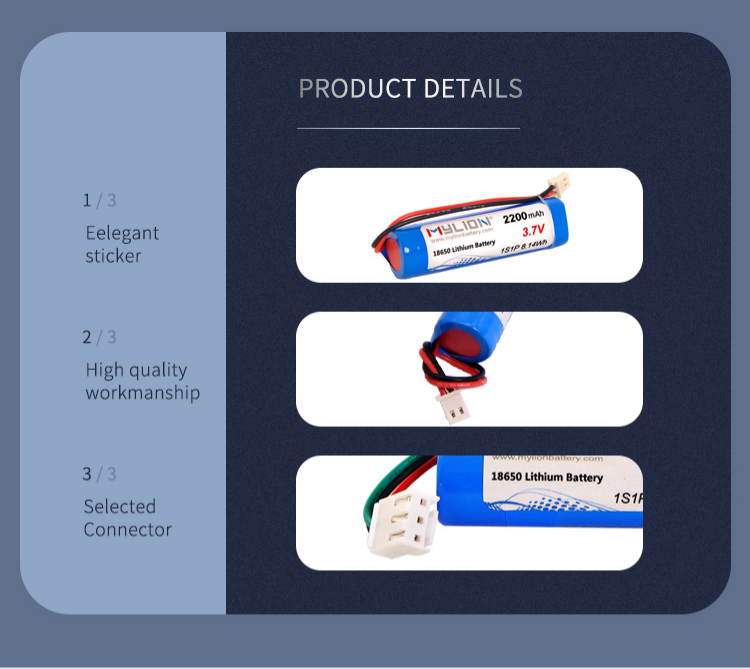
Application of 18650 lithium battery
The application of lithium secondary batteries in the energy battery industry benefits from their superior performance. With the continuous development of lithium secondary battery technology, it has been widely used in our daily life; rechargeable batteries that are used repeatedly are more and more favored by consumers. Pay attention to the energy battery industry and fully understand the battery so that we can “use it for me”. At present, 18650 lithium batteries have certain applications in the following fields.
1. Energy storage
Mainly used in base station power supply, clean energy storage, grid power storage, household optical storage system, etc.
2. Power
Mainly refers to electric vehicles, electric bicycles, new energy vehicles, etc.
3. Digital
Mobile phones, tablets, laptops, electric toys, MP3/MP4, earphones, power banks, model airplanes, mobile power supplies, etc.
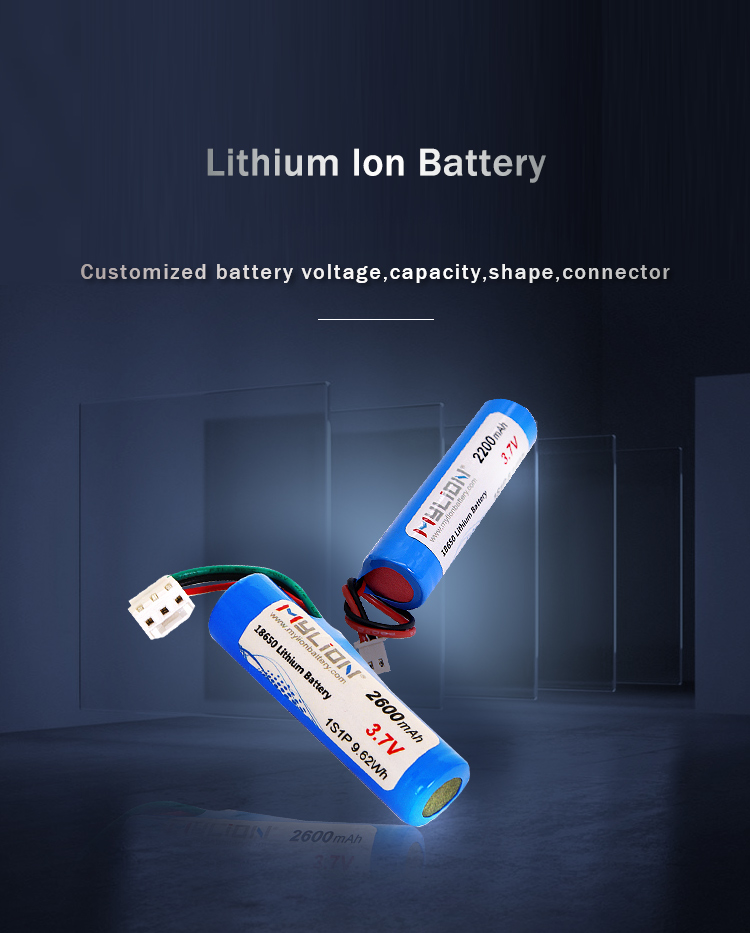
Charging process of 18650 lithium battery
Some chargers are implemented using cheap solutions, and the control accuracy is not good enough, which can easily cause abnormal battery charging and even damage the battery. When choosing a charger, try to choose a big brand of 18650 lithium-ion battery charger, quality and after-sales are guaranteed, and the service life of the battery is prolonged.
The brand-guaranteed 18650 lithium-ion battery charger has four protections: short-circuit protection, over-current protection, over-voltage protection, battery reverse connection protection, etc.
Overcharge protection: When the charger overcharges the lithium-ion battery, in order to prevent the internal pressure from rising due to temperature rise, it is necessary to terminate the charging state.
For this reason, the protection device needs to monitor the battery voltage, and when it reaches the battery overcharge voltage, it activates the overcharge protection function and stops charging.
Over-discharge protection: In order to prevent the over-discharge of the lithium-ion battery, when the voltage of the lithium-ion battery is lower than its over-discharge voltage detection point, the over-discharge protection is activated, the discharge is stopped, and the battery is kept in a low quiescent current standby mode.
Over-current and short-circuit protection: When the discharge current of the lithium-ion battery is too large or a short-circuit condition occurs, the protection device will activate the over-current protection function.
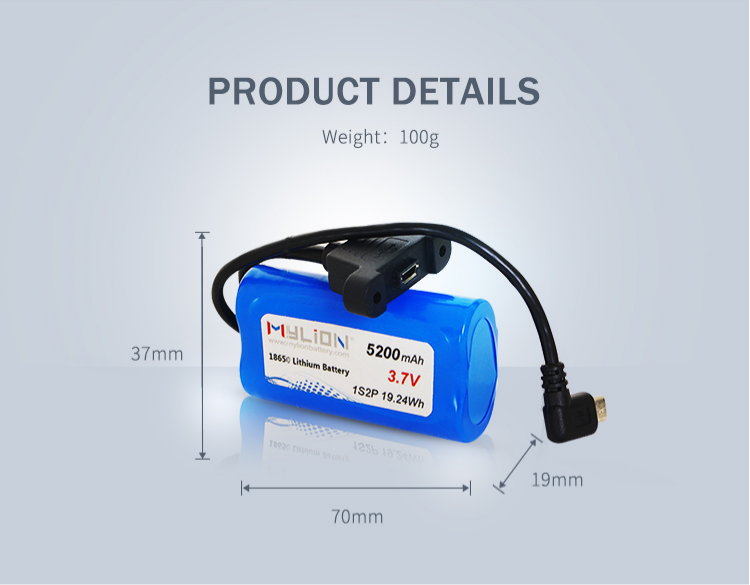
Lithium battery charge control is divided into two stages
The first stage is constant current charging. When the battery voltage is lower than 4.2V, the charger will charge with a constant current.
The second stage is the constant voltage charging stage. When the battery voltage reaches 4.2V, due to the characteristics of lithium batteries, if the voltage is higher, it will be damaged. The charger will fix the voltage at 4.2V and the charging current will gradually decrease. When it is reduced to a certain value (generally 1/10 of the set current), the charging circuit is cut off, the charging completion indicator light is on, and the charging is completed.
Excessive charging and discharging of lithium-ion batteries can cause permanent damage to the positive and negative electrodes. Excessive discharge causes the negative carbon sheet structure to collapse, and the collapse will cause lithium ions to be unable to be inserted during the charging process; overcharging causes too much lithium ions to be inserted into the negative carbon structure, causing some of the lithium ions to be unable to be released anymore.

Charging principle of 18650 lithium battery
The working principle of lithium-ion battery refers to its charging and discharging principle. When the battery is charged, lithium ions are generated on the positive electrode of the battery, and the generated lithium ions move to the negative electrode through the electrolyte. The carbon as the negative electrode has a layered structure. It has many micropores. The lithium ions that reach the negative electrode are embedded in the micropores of the carbon layer. The more lithium ions are inserted, the higher the charging capacity.
In the same way, when the battery is discharged (that is, the process when we use the battery), the lithium ions embedded in the carbon layer of the negative electrode are released and move back to the positive electrode. The more lithium ions returned to the positive electrode, the higher the discharge capacity. What we usually call battery capacity refers to the discharge capacity.
It is not difficult to see that during the charging and discharging process of lithium-ion batteries, lithium ions are in a state of movement from positive → negative → positive. If we compare the lithium-ion battery to a rocking chair, the two ends of the rocking chair are the two poles of the battery, and the lithium ion is like an excellent athlete running back and forth on both ends of the rocking chair. Therefore, the experts gave the lithium-ion battery a lovely name, rocking chair battery.
Summary: As a lithium battery with very high performance contrast, 18650 will be used more and more widely. After all, for this indispensable battery, 18650 lithium battery is the best choice.


